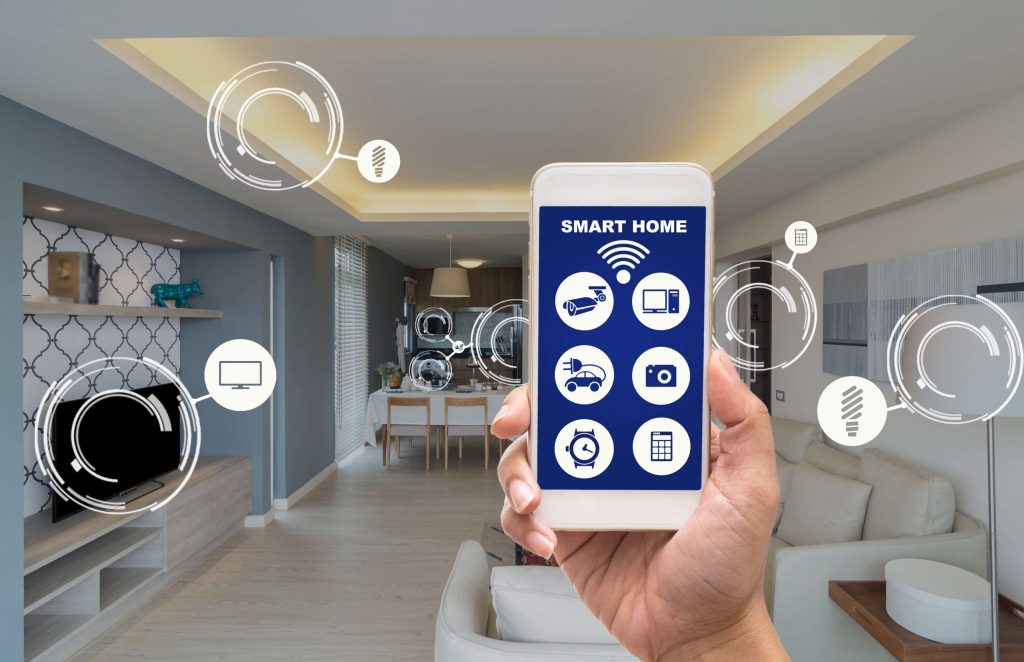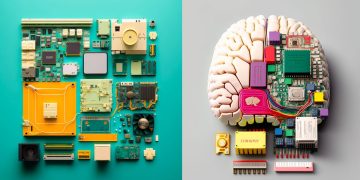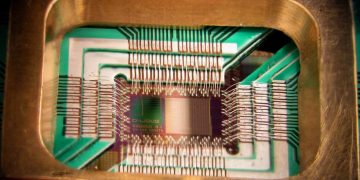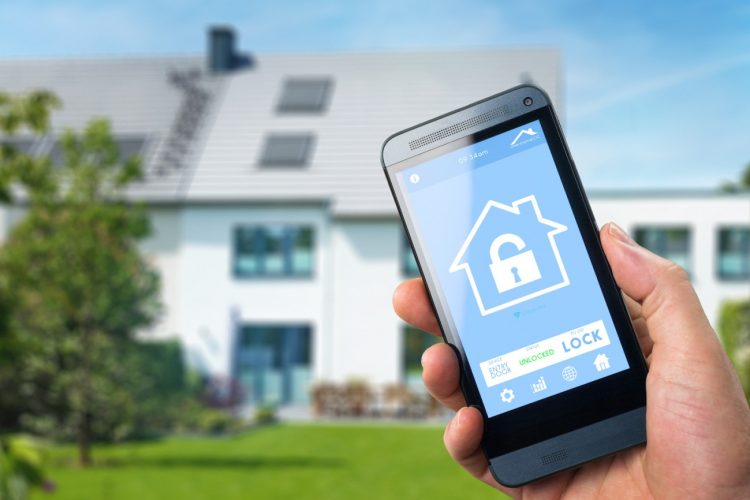Introduction: As Homes Become Smarter, the Security Concerns Associated with IoT Devices Increase
In recent years, the rise of smart home devices has transformed the way we live, offering unparalleled convenience, automation, and connectivity. From smart thermostats and refrigerators to voice-controlled assistants and security systems, the Internet of Things (IoT) has created a more efficient and comfortable living environment. However, with this increased convenience comes a significant concern—cybersecurity.
The integration of various IoT devices within the home network has expanded the potential attack surface for hackers and cybercriminals. While smart home devices offer remarkable benefits, they also introduce several vulnerabilities that could be exploited by malicious actors. As more and more devices connect to the internet, from lighting systems and doorbell cameras to smart locks and health monitors, the need for robust security measures has become more pressing.
In this article, we will explore the security risks associated with smart homes, examine the common vulnerabilities, and discuss the measures that can be taken to secure these systems. We will also look ahead at how future innovations in security, including AI-powered threat detection and cloud-based security services, can help protect smart homes from evolving cyber threats.
Common Smart Home Vulnerabilities: Hacking Threats, Weak Passwords, Insecure Communication Protocols, and Lack of Software Updates
As convenient and efficient as smart homes are, they are also rife with potential vulnerabilities that can be exploited by cybercriminals. Some of the most common security issues associated with smart home devices include:
- Hacking Threats: Smart home devices are, by nature, always connected to the internet, which exposes them to potential hacking attempts. Hackers can target these devices to gain access to the home network and, in some cases, control other connected devices. Once inside the system, attackers may be able to steal personal data, monitor the homeowner’s activities, or even unlock doors or disable security systems. For instance, smart cameras and doorbell systems that rely on cloud services for remote access could be hacked, allowing cybercriminals to view live feeds or even communicate with the homeowners unknowingly. Similarly, attackers may manipulate smart locks to grant unauthorized access to the home.
- Weak Passwords: One of the most fundamental and easily preventable security vulnerabilities is the use of weak or default passwords. Many users fail to change the default passwords set by manufacturers when setting up their smart home devices. This makes it relatively easy for hackers to gain unauthorized access to the device and its associated network. Passwords that are too simple, such as “123456” or “password,” are also at risk of being guessed or cracked through brute force attacks. Without strong, unique passwords for each device, the entire smart home ecosystem remains vulnerable to cyber threats.
- Insecure Communication Protocols: Smart home devices communicate with each other and with the central hub or cloud via various protocols. Some devices use insecure or outdated communication methods that are susceptible to interception and exploitation. For example, older devices may use unsecured Wi-Fi or Bluetooth connections, making them vulnerable to attacks such as Man-in-the-Middle (MitM) attacks, where cybercriminals intercept and manipulate data being transmitted. The lack of encryption in data transmission between devices also leaves sensitive information exposed to attackers. This is particularly concerning for devices that store sensitive personal data, such as health monitors or smart cameras.
- Lack of Software Updates: Many smart home devices require regular software updates to fix bugs, patch security vulnerabilities, and introduce new features. However, many users fail to update their devices regularly, leaving them exposed to known security risks. Manufacturers may release patches to address vulnerabilities, but if the device remains unpatched, it becomes a target for hackers. The lack of updates is particularly problematic for devices that are not supported by manufacturers anymore, as these devices may not receive security patches for newly discovered vulnerabilities. Without regular software updates, smart home systems become increasingly susceptible to cyber threats over time.
Security Measures: End-to-End Encryption, Two-Factor Authentication, and Regular Security Patches
As the threats to smart home security become more sophisticated, it’s crucial for consumers, manufacturers, and service providers to implement a range of security measures to protect against cyber attacks. Several key strategies can enhance the security of smart home devices:
- End-to-End Encryption: One of the most effective ways to secure data transmitted between devices is through end-to-end encryption (E2EE). With E2EE, the data is encrypted on the sender’s device and can only be decrypted by the recipient device, ensuring that no third party (including hackers) can intercept or read the communication. Many smart home devices, particularly those involved in security, such as smart cameras and doorbell systems, should use E2EE to protect the privacy of users. This prevents sensitive video and audio footage from being intercepted while in transit. End-to-end encryption ensures that even if data is captured during transmission, it remains unreadable without the decryption key.
- Two-Factor Authentication (2FA): Two-factor authentication is an additional layer of security that requires users to provide two forms of identification to access their accounts or devices. Typically, 2FA involves something the user knows (a password) and something the user has (a code sent to a mobile phone or authentication app). Enabling 2FA for smart home devices and associated accounts can significantly reduce the risk of unauthorized access. Even if a hacker manages to obtain a user’s password, they would still need the second factor (such as a one-time passcode sent to the user’s phone) to gain access to the device or system.
- Regular Security Patches and Software Updates: Manufacturers must be diligent in releasing security patches and software updates for smart home devices. These updates should address any vulnerabilities discovered and ensure that the devices remain secure. It’s essential for consumers to enable automatic updates whenever possible to ensure they don’t miss out on critical security patches. Additionally, consumers should periodically check the manufacturer’s website or the device’s app for updates to ensure their devices are running the latest software version. This practice will help protect against known vulnerabilities and ensure the continued safe operation of the device.

User Awareness: How Consumers Can Protect Their Smart Homes, Including Advice on Secure Networks and Password Management
While manufacturers and service providers play a crucial role in ensuring the security of smart home devices, consumers also bear responsibility for protecting their homes from cyber threats. Here are several steps consumers can take to enhance their smart home security:
- Change Default Passwords: The first step in securing a smart home is changing the default passwords on all devices. Users should create strong, unique passwords for each device and account. Passwords should include a mix of letters (upper and lowercase), numbers, and special characters to make them difficult to guess or crack. Using a password manager can help consumers generate and store complex passwords for each device and service, reducing the risk of using weak or repeated passwords.
- Secure Your Home Network: A smart home is only as secure as the network it operates on. Consumers should ensure their home Wi-Fi network is protected with a strong password and encrypted using WPA3 (Wi-Fi Protected Access 3) or at least WPA2 encryption. Additionally, it’s advisable to create a separate network for smart devices to keep them isolated from personal devices like computers and smartphones. Enabling a Virtual Private Network (VPN) on smart devices can also add an additional layer of security by encrypting data transmitted over the internet.
- Regularly Review and Manage Devices: It’s important for consumers to regularly review the devices connected to their home network. Any devices that are no longer in use should be removed from the network, as they could represent an outdated vulnerability. Consumers should also regularly check device permissions to ensure that only authorized individuals have access.
- Enable Device Security Features: Many smart home devices come with additional security features that can help protect the user. For example, users should enable features like remote device locking, alerts for unusual activity, and security monitoring options.
Future of Smart Home Security: AI-Powered Threat Detection, Automated Security Responses, and Integration with Cloud Security Services
As the smart home ecosystem continues to expand, so too does the sophistication of cyber threats. The future of smart home security will rely heavily on advanced technologies such as artificial intelligence (AI) and cloud security services to detect and respond to threats in real-time.
- AI-Powered Threat Detection: AI can play a significant role in enhancing the security of smart homes. AI-powered threat detection systems can analyze patterns of behavior within the home network to identify unusual or suspicious activity. For example, if a smart lock is accessed at an unusual time or a security camera detects movement in an empty house, AI can trigger an alert or even take automated actions such as locking doors or notifying the homeowner. Machine learning algorithms will enable these systems to continuously improve over time, learning from past incidents to better predict and respond to potential threats.
- Automated Security Responses: As smart home security becomes more advanced, we will see the integration of automated responses to threats. For example, if a cyber attack is detected, the smart home system could automatically disconnect the affected devices from the network, alert the user, and initiate a security protocol to protect the home.
- Cloud Security Services: Cloud-based security services will become an integral part of smart home security. These services can provide centralized monitoring, real-time threat analysis, and remote response capabilities, making it easier for users to manage the security of their smart homes. Additionally, cloud security services can ensure that data is securely stored and protected from local vulnerabilities, offering an extra layer of protection in the event of a device or network compromise.
Conclusion: Smart Homes Offer Great Convenience but Require Ongoing Attention to Security and Privacy to Avoid Potential Vulnerabilities
Smart homes are revolutionizing the way we live, offering convenience, efficiency, and automation. However, as the number of connected devices grows, so do the security risks associated with them. To ensure the safety and privacy of their homes, consumers must take proactive steps to secure their devices and networks.
By implementing security measures such as strong passwords, two-factor authentication, end-to-end encryption, and regular software updates, users can significantly reduce the risk of cyber threats. Furthermore, the integration of AI-powered security solutions and cloud-based services will likely play a crucial role in enhancing smart home security in the future.
Ultimately, while smart homes offer tremendous potential, users must remain vigilant and committed to ensuring their systems are secure. With ongoing attention to cybersecurity, the smart home ecosystem can continue to thrive in a safe and secure manner.
















































Discussion about this post